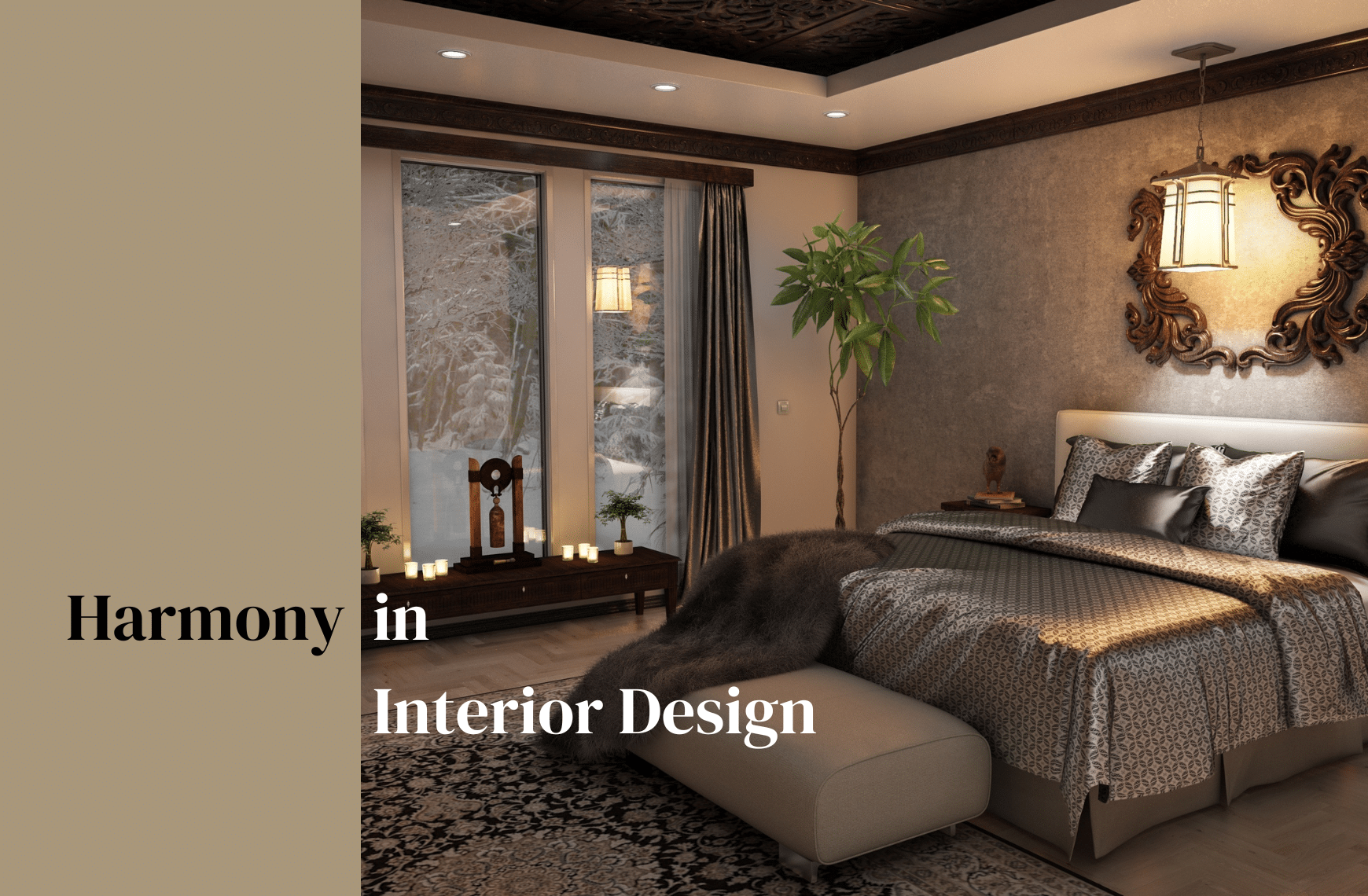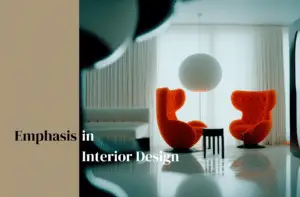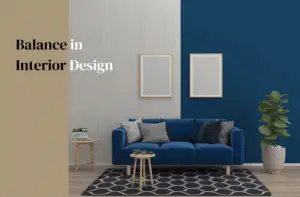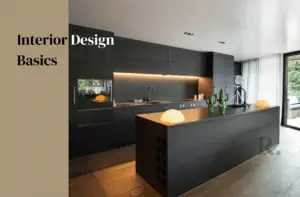Free Shipping On All Orders
Harmony in Interior Design: Achieving Balance and Cohesion in Your Space

Harmony in interior design is the art of creating a balanced, cohesive, and pleasing environment by blending various elements of design together. As an essential aspect of interior design, harmony ensures that the chosen colors, patterns, and furniture pieces work seamlessly together to provide a sense of unity and flow. The key to achieving harmony lies in carefully considering factors such as overall theme, style, and mood, in order to create spaces that feel inviting and comfortable for the occupants.
Understanding the principles of harmony and unity is vital for anyone who is passionate about creating harmonious spaces within their homes or workplaces. A well-designed room not only reflects the personality of the occupants but also promotes a sense of well-being and tranquility. By mastering the principles of harmony, you can transform a seemingly disjointed space into an area that exudes a sense of balance and cohesion, incorporating elements of both personal taste and functional design.
Key Takeaways
- Harmony creates a balanced, cohesive, and pleasing environment in interior design
- Mastering harmony involves considering the theme, style, and mood of a space
- A harmonious room promotes well-being and reflects the occupants’ personality
Color and Harmony in Interior Design
Color Schemes
I believe one key aspect of achieving harmony in interior design is choosing the right color scheme. When selecting colors for a space, it’s essential to maintain balance and consistency. The 60-30-10 rule is an effective guideline. Here’s the breakdown:
- 60% of the room’s color comes from the dominant color (walls)
- 30% is the secondary color (upholstery and furniture)
- 10% is reserved for accent colors (accessories and accents)
Following this rule helps me create a visually harmonious environment.
Color Psychology
Understanding color psychology is crucial for creating harmony in interior design. Recognizing how colors influence moods, feelings, and even sleep patterns helps me with selecting the appropriate hues for a specific space. Here is a breakdown of the common associations with various colors:
- Red: Energy, passion, and warmth
- Blue: Calmness, stability, and trust
- Green: Nature, growth, and tranquility
- Yellow: Happiness, optimism, and creativity
- Purple: Luxury, spirituality, and sophistication
I carefully consider the psychological effects of colors when designing a space, ensuring harmony and fulfilling the desired atmosphere.
Furniture Selection and Arrangement
Proportion and Scale
When it comes to creating harmony in interior design, one of the most important aspects I pay attention to is the proportion and scale of the furniture in a room. Ensuring that the pieces work well together in terms of size and shape can create a balanced and visually appealing space. I carefully choose furniture items that not only suit the overall style of the room, but also fit comfortably within the available space. This can involve measuring and considering the dimensions of each piece in relation to the room dimensions and any architectural features. Additionally, I make sure to arrange the furniture in a way that allows for smooth traffic flow, making the space functional and user-friendly.
Functional Considerations
Another crucial aspect of achieving harmony in interior design is incorporating functional considerations into furniture selection and arrangement. This entails taking into account how the space will be used, and which pieces of furniture will best serve the intended purpose for the area.
For instance, if I am designing a living room, I would ensure that there are sufficient seating options and surfaces for entertaining, such as sofas, chairs, coffee tables, and sideboards. For a home office, I would prioritize the practicality of a suitable desk, ergonomic chair, and adequate storage units.
While functionality is key, I also strive for a cohesive and pleasant visual experience within each space. To do this, I might consider the color, texture, and pattern of the furniture pieces, aiming for a balance that contributes to the overall harmony in the room.
Lighting and Harmony
Natural Light
In my experience, natural light plays a crucial role in creating harmony in interior design. It not only complements other elements within the space, but it also helps achieve a sense of balance and unity. I recommend making the most of available natural light by incorporating large windows, skylights, and mirrors to enhance the feeling of spaciousness. To maintain harmony, it’s essential to consider the position and size of the windows, the direction they face, and the type of window treatments used. Remember to be mindful of privacy and energy efficiency while choosing appropriate window coverings.
Artificial Lighting
While natural light is key to creating harmony in interior design, artificial lighting also has an essential role to play, especially during evening hours or in spaces with limited natural light sources. I think it’s important to understand the three types of artificial lighting – ambient, task, and accent – and their roles in creating a harmonious interior design.
- Ambient lighting: This type of lighting provides general illumination to space. I suggest using fixtures like ceiling-mounted lights, floor lamps, and wall sconces to create a comfortable and evenly lit atmosphere.
- Task lighting: Task lighting focuses on specific areas that require more direct illumination, such as work surfaces, reading nooks, or cooking zones. In my opinion, adjustable table lamps, under-cabinet lighting, and pendant lights are excellent choices for task lighting, as they can be directed where needed.
- Accent lighting: To highlight specific design features or create visual interest, I often use accent lighting. Track lighting, spotlights, and wall-mounted picture lights are a few examples of fixtures that can be used for this purpose.
To achieve harmony in interior design through artificial lighting, it’s crucial to find the right balance between these three types of lighting. Consider their intensity, color, and direction to create a cohesive and visually pleasing atmosphere. And remember, lighting should always be adjustable to accommodate different moods and activities.
Incorporating Textures and Patterns
When designing a harmonious interior space, incorporating textures and patterns is essential. In this section, I will discuss the importance of textures and patterns and provide essential tips for successfully implementing them into your designs.
Textures
In interior design, texture is vital for creating a visually appealing and comfortable space. Texture can help break up the monotony of a room and add depth and interest without overwhelming the design. Here are some ways to incorporate texture into a harmonious interior design:
- Contrast: Balance different textures to create contrast, which will be soothing to the eyes and help highlight specific design elements. For example, pairing rough wood with smooth metals or combining plush fabrics with sleek surfaces can create an appealing visual balance.
- Layering: Layer different textures in your design to create depth, ensuring that each layer complements the others. For example, layering rugs, throw pillows, and blankets of various materials and textures can provide a sense of coziness and warmth.
- Materials: Experiment with different materials when selecting furniture, accessories, and wall finishes. Natural materials such as wood, stone, and plants can add organic textures that complement other design elements.
Patterns
Patterns can bring personality and energy to a space, creating a harmonious interior design when used correctly. Here are some tips for incorporating patterns into your design:
- Stripes: Stripes, both horizontal and vertical, are a basic yet elegant form of pattern in interior design. They can visually enhance the space by adding a sense of length and width. For instance, a horizontal stripe pattern can make the interior look wider, giving an illusion of a larger space.
- Mixing Patterns: When mixing patterns, ensure that they share a common color or theme to maintain harmony. Start with a dominant pattern and use smaller, less bold patterns to complement it.
- Scale: Pay attention to the scale of your patterns. Balance larger, bold patterns with smaller, more subtle ones to create a harmonious and visually appealing design.
- Repetition: To create a sense of harmony, repeat patterns throughout your space. This can be done using similar patterns on accent pillows, rugs, or artwork, helping tie the design together and create a cohesive look.
By thoughtfully incorporating textures and patterns, I can achieve a harmonious interior design that is visually interesting, comfortable, and cohesive.
Accessories for a Harmonious Home
In my experience with interior design, I’ve found that accessories play a crucial role in achieving harmony. They can serve as the icing on the cake, tying together all the elements in a space and creating a cohesive and aesthetically pleasing environment. Let me share some insider tips on how to select and arrange accessories for a harmonious home.
First and foremost, it’s important to choose accessories that complement the overall theme, color scheme, and style of your interior. Textures and materials are key to maintaining harmony. Opt for natural fibers like cotton, linen, or wool, and consider incorporating rattan or wicker furniture. Additionally, materials such as marble, stone, or wood flooring can provide a sense of warmth and peace.
When selecting accessories, it’s essential to balance the scale and proportion of the pieces with your existing furnishings and room size. For example, a large-scale artwork may be overpowering in a small space, whereas a collection of smaller pieces can create visual interest without overwhelming the room.
Layering is another technique that allows the space to feel harmonious, refined, and visually engaging. Introduce a variety of textures by incorporating rugs, throw pillows, and blankets, as well as wall treatments, furniture finishes, and accessories. This approach adds depth and dimension, ensuring that each element works together seamlessly.
In addition to layering, creating a focal point can help anchor your space and contribute to harmony. A focal point could be anything from a statement piece of furniture to an eye-catching artwork or display shelf. By drawing attention to a specific area, you can effectively guide the viewer’s eye and establish a sense of balance.
When arranging your accessories, it’s crucial to keep in mind the concept of visual weight and balance. Consider the distribution of colors, textures, shapes, and sizes to avoid making one area feel too heavy or cluttered. For example, large and heavy objects should be balanced with smaller and lighter ones, while vibrant colors should be offset by neutrals and softer hues.
Influence of Different Interior Design Styles
Minimalism
In my experience with interior design, I’ve found that minimalism has a significant impact on creating a harmonious space. This style emphasizes simplicity and clean lines to achieve a sense of calm and clarity. By focusing on functional elements and reducing clutter, minimalism allows for a pleasing balance within the space. Colors in this design style are usually neutral and soothing, allowing for a seamless blending of elements, further contributing to the harmony in the room. Since minimalist spaces are free of unnecessary distractions, it’s easier for the eye and mind to focus on the essential details, thus enhancing the harmonious atmosphere.
Mid-Century Modern
Another design style I often employ for achieving harmonious interior design is the mid-century modern approach. This style largely emphasizes organic shapes, sleek lines, and functionality which allow for a balanced and harmonious space. The use of natural materials, such as wood and stone, is commonplace in mid-century modern design, aiding in creating a sense of warmth and serenity in the room.
One aspect that sets this style apart from others is its focus on bringing the outdoors in. This approach of incorporating plants and natural light into the living space, for example, significantly contributes to creating harmony by establishing a connection between the inhabitants and their surrounding environment.
Traditional
The traditional interior design style is another method I utilize to create harmonious spaces. Rooted in classic European designs, this style offers a warm and welcoming atmosphere. Traditional design is characterized by:
- Heavy use of wood or natural materials
- Rich color palettes
- Detailed craftsmanship, such as carved wood molding or intricate patterns on textiles
These elements together help to provide a sense of balance and continuity within the space. In my experience, traditional design typically includes a combination of new and heirloom pieces, which allows the homeowner to infuse their personal touch into the space, further contributing to the overall harmony.
I always strive to create spaces that feel cohesive and comfortable. By incorporating these design styles—minimalism, mid-century modern, and traditional—into my projects, I’m able to ensure that each room is not only visually appealing but also harmonious and inviting.
Harmony Challenges and Solutions
Dealing with Clutter
One of the primary challenges in creating harmony in interior design is dealing with clutter. We often accumulate various items over time, and it can be difficult to keep everything organized and visually appealing. Clutter can disrupt the overall sense of harmony in a space, making it feel chaotic and overwhelming. To create a harmonious interior design, I believe it’s essential to address clutter and find functional yet attractive ways to store and display items.
To maintain harmony while dealing with clutter, consider the following:
- Regularly declutter by discarding, donating, or selling items that no longer serve a purpose or bring joy.
- Invest in functional storage solutions like shelves, cabinets, and baskets that blend seamlessly with your overall design.
- Group similar items together (e.g., books, decorative objects, or plants) for a cohesive and organized look.
- Utilize vertical space by installing wall-mounted shelves, cabinets, or hooks to minimize floor clutter.
Creating Flow
When it comes to harmonious interior design, creating flow is essential. Flow refers to how our eyes move through space and how harmoniously each area connects to the next. It’s crucial for the design to feel cohesive, comfortable, and logically arranged. Achieving proper flow is a challenge that demands attention to detail and understanding the principles of balance, proportion, and scale.
To create a sense of flow in your space, I recommend the following:
- Establish a clear focal point in each room that visually anchors the space and directs the eye.
- Implement a consistent color palette throughout the entire space to create a harmonious atmosphere.
- Use a mix of furniture sizes and shapes, maintaining balance and establishing visual hierarchy by placing larger pieces near the focal point.
- Take note of traffic patterns and arrange furniture accordingly, ensuring there’s enough space to move unobstructed from one area to another.
- To create seamless transitions between rooms, use similar design elements (e.g., colors, materials, and textures) that establish continuity and strengthen the sense of flow.
By addressing clutter and creating flow, it is possible to achieve a harmonious interior design that feels balanced, visually appealing, and comfortable for everyone who spends time in the space.
Harmony in Sustainable and Eco-Friendly Design
Achieving harmony is essential for creating positive, inviting spaces. Harmony in sustainable and eco-friendly design goes beyond just aesthetics, it also encompasses the delicate balance between form, function, and the environment. As we keep our planet in mind, I focus on making ethical, informed decisions when selecting materials and products that contribute to a harmonious atmosphere.
One way I achieve harmony in interior design is through eco-sourcing. By partnering with companies that prioritize sustainable materials, I can guide clients towards furniture, finishes, and accessories that are better for their health and the environment. An excellent example of this is opting for vegan materials like faux silk made from banana plants or faux leather made from sustainable sources, such as cork or recycled polyester. These alternatives are not only cruelty-free but also less toxic, resulting in cleaner energy.
Another important aspect of harmonious interior design is carefully selecting color schemes and textures that work well together. This creates a sense of unity, which is crucial for achieving a sustainable and eco-friendly atmosphere. Implementing natural elements, such as wood, stone, and plants, not only reinforces a connection to the environment but also contributes to a space that feels cohesive and soothing.
When focusing on sustainable interior design, I also strive to create a healthy environment for my clients. To accomplish this, I prioritize the use of non-toxic paints, materials with low VOC (volatile organic compounds), and organic, hypoallergenic fabrics when appropriate.
Design and Harmony for Different Spaces
Incorporating harmony in interior design is essential for creating spaces that feel balanced, cohesive, and aesthetically pleasing. In this section, I will discuss how to achieve harmonious interior design in various spaces like living rooms, bedrooms, and kitchen & dining areas.
Living Room Styles
For the living room, selecting a color palette is the first step to create harmony. I ensure to choose colors that complement each other, using shades from a similar hue family. Next, I pay attention to furniture placement, arranging pieces to create balance and unity within the space. To achieve this, I use a symmetrical layout or employ techniques like grouping similar items together. Moreover, using consistent materials, finishes, and textures for furniture and accessories will enhance the harmonious atmosphere.
Bedroom Retreats
When designing bedrooms, my focus is on creating a calming, restful space. I start by choosing a soothing color palette, often using neutral or pastel colors that give a sense of tranquility. Additionally, I ensure a balance between furniture pieces by adhering to basic rules of proportion. For example, I combine a large bed with smaller bedside tables or use matching pieces on either side of the bed.
To further enhance harmony, I incorporate a variety of textures in linens, pillows, and throws. By mixing different textures like smooth, soft, and rough, I create visual interest without disrupting the calming atmosphere.
Kitchen and Dining Layouts
In kitchen and dining spaces, harmony is achieved by creating a functional and visually pleasing layout. I carefully consider primary functions like cooking, dining, and socializing while designing the space.
For color schemes, I opt for a simple color palette that complements the other living spaces in the home. To achieve balance in the design, I often use:
- Symmetry: Aligning elements like cabinetry and appliances
- Repetition: Incorporating similar colors, materials, or patterns throughout the space
- Proximity: Placing related items close together, such as grouping cookware near the stove
To create a harmonious dining experience, I pay attention to the scale and proportion of the dining table, chairs, and other furniture pieces. Choosing coordinating tableware and linens with consistent colors, materials, and patterns also adds to the sense of harmony.
Frequently Asked Questions
What is harmony in interior design?
Harmony in interior design refers to the overall feeling of balance and unity in a space.
How can I create harmony in my home?
To create harmony in your home, start by establishing a color scheme and using it consistently throughout the space. Incorporate natural materials and textures, and aim for a balanced proportion of soft neutrals with plenty of contrast.
What is color harmony in interior design?
Color harmony in interior design involves using colors that work together to create an overall unified and aesthetically pleasing look. This can be achieved through complementary or analogous color schemes, as well as through the use of accent colors.
If you liked this post about harmony in interior design, don’t forget to follow us on Pinterest so you don’t miss any more interior design news!




